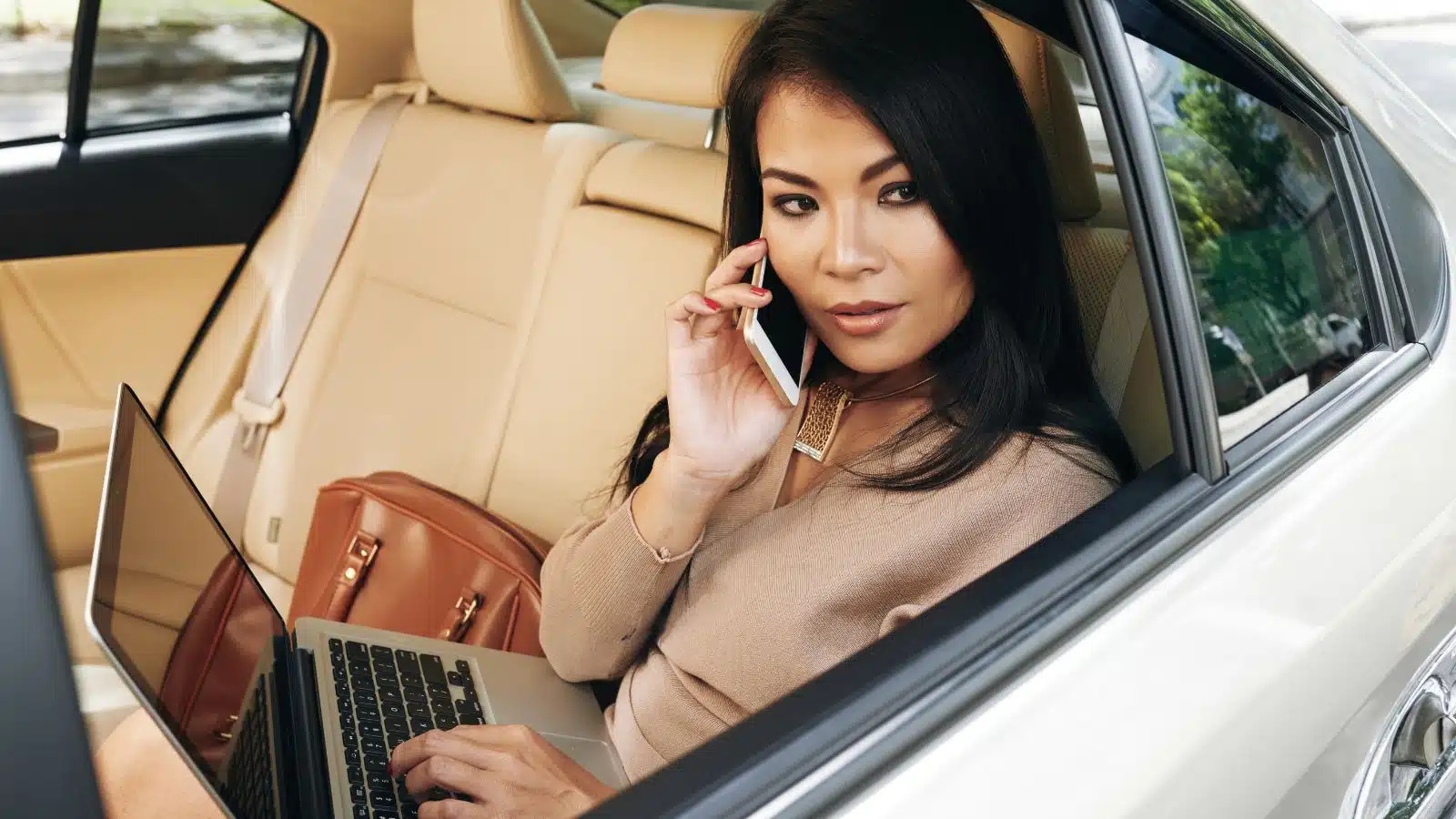Appearances can be deceiving, and there are often subtle clues that someone may not be as wealthy as they seem. They may always have the latest gadgets or fashion but lack savings or investments for the future. These little clues reveal that, despite a lavish lifestyle, their financial situation may be less secure than it looks.
1. Leased Luxury: Living Beyond Means

Ever spotted that neighbor with a new luxury car annually? Leasing, not owning, could be the secret. It’s a common way to project wealth without financial commitment. This is a humorous nod to those who prioritize appearances over assets.
2. Designer Dupes: The Imitation Game

Knock-offs are a tell. Authentic luxury items are more than logos. They embody craftsmanship and history. It’s amusing how some prefer Counterfeit Chic to genuine simplicity. A clever choice for some, but a rich irony indeed.
Follow Invested Wallet For More

If you’ve enjoyed reading our content and are passionate about learning wealth, managing your finances, and achieving financial freedom, we’d love for you to join our community! Click here to follow Invested Wallet for more.
3. Flashy Over Frugal: Spending Habits Exposed

Flashy spending habits often overshadow frugal wisdom, revealing a preference for appearance over savings. Studies show flashy spenders often lack real wealth. Lavish parties and exotic vacations might mask a leaner reality. This serious observation suggests that sometimes, less truly is more.
4. Debt-Fueled Lifestyle: The Credit Card Trap

An alarming trend is the reliance on credit for luxury. Research indicates this leads to financial instability. The serious tone here underscores the risks of equating credit limits with wealth. It’s a dangerous game of financial pretense.
5. Social Media Mirage: Filters Over Finances

The curated lives on social media rarely reflect true financial health. A 2017 study debunked the idea that being perpetually busy signals high status. Behind every filtered façade lies reality. It’s a casual reminder that not all that glitters is gold, especially in the digital age.
6. Constant Upgrades: The Leasing Lure

The allure of the latest models, be it cars or gadgets, often masks a reliance on leasing schemes. A humorous poke at the cycle of upgrade culture, where owning feels old-school, and leasing looks lavish. It’s a clever facade, but savvy eyes see through.
7. Brand Obsession: Logos Over Legacy

An eye for logos without understanding their legacy may reveal shallow pockets. True luxury is in the story, not just the symbol. This section playfully critiques the logo chase, urging a deeper appreciation for what truly defines value.
8. The Debt Masquerade: Credit as Currency

Research indicates a growing trend: living lavishly on borrowed time (and money). This serious insight unveils the hidden cost of a debt-driven lifestyle. It’s a cautionary tale about the illusion of affluence built on a foundation of credit. This illusion thrives on borrowed time and money, not abundance.
9. Social Status Spending: Peer Pressure Purchases

It’s a blend of humor and gravity, reflecting on the pressure to parade prosperity, regardless of reality. Studies have shown that social circles significantly influence spending habits. This observation highlights the competitive nature of conspicuous consumption.
10. Digital Delusions: The Instagram Illusion

The curated opulence of social media often eclipses the mundane truth. This casual commentary on the digital distortion of wealth emphasizes the gap between online image and offline reality. This is a reminder that in the world of filters and followers, financial stability isn’t always as it appears.
11. Constantly Flaunting New Purchases

The more they show, the less they might have. True wealth whispers. Flashy displays often scream credit, not cash. This behavior often seeks validation, not admiration. True wealth is quiet, finding no need to broadcast acquisitions. It’s a cycle of consumption, masking deeper financial insecurities.
12. The Debt Behind the Display

Recent studies indicate a surge in luxury living funded by debt. A serious note on the facade of financed opulence. It’s not wealth but borrowing that fuels their fire. A cautionary tale of credit’s deceptive glow.
13. Experiential Extravagance

In the chase for the appearance of a lavish lifestyle, an emerging trend is the prioritization of expensive experiences over the accumulation of practical wealth. This can manifest as splurging on luxury travel, high-end dining, and exclusive events that offer a temporary status boost but leave little lasting value. It’s an intriguing paradox where individuals invest heavily in fleeting moments, seeking to capture and share these experiences on social media, often as a testament to a life rich in adventure rather than financial security.
14. Minimal Savings or Investments

Despite a high-spending lifestyle, having little to no savings or investments reveals a lack of actual wealth accumulation. High spending and minimal savings highlight wealth’s illusion. Little to no investments signal poor financial health.
15. Living for the Next Big Event

Studies reveal a pattern: the less financially secure often focus on outward appearances. A poignant reflection on the pursuit of moments over stability. True wealth is in the unseen, not the next gala.
16. No Emergency Fund

Many people who appear wealthy might not have an emergency fund. According to a survey by Bankrate, nearly 25% of Americans have no emergency savings. This lack of financial cushion indicates that their lavish lifestyle is not backed by financial security, making them vulnerable to unexpected expenses.
17. Living Paycheck to Paycheck

Despite high earnings, some individuals still live paycheck to paycheck. This means their income is quickly spent on maintaining their lifestyle, leaving little to no room for savings. According to a 2023 study by PwC, 54% of high-income earners report living paycheck to paycheck, highlighting the gap between perceived wealth and financial stability.
18. High Housing Costs

Overspending on housing is another indicator. People may live in expensive homes to project wealth, but if their mortgage or rent takes up a significant portion of their income, it suggests financial strain. Experts recommend housing costs should not exceed 30% of one’s income, yet many exceed this limit to keep up appearances.
19. Lack of Retirement Savings

A telltale sign of financial insecurity is inadequate retirement savings. Many focus on current luxury rather than future security. The National Institute on Retirement Security found that 66% of working millennials have no retirement savings, reflecting a preference for present indulgence over long-term planning.
20. Frequent Borrowing from Friends and Family

Constantly borrowing money from friends or family members indicates financial distress. Even if they appear affluent, relying on personal loans to cover expenses shows a lack of financial stability. This behavior is a clear sign that their outward wealth is not matched by real financial health.
10 Frugal Lessons I Learned From Being Flat Out Broke

I was living in the middle of a big city all by myself and paying my bills on a server’s salary. I had zero savings and was living paycheck to paycheck just to get by; frugal living was a necessity.
Read More: 10 Frugal Lessons I Learned From Being Flat Out Broke
Follow Invested Wallet For More

If you’ve enjoyed reading our content and are passionate about learning wealth, managing your finances, and achieving financial freedom, we’d love for you to join our community! Click here to follow Invested Wallet for more.
